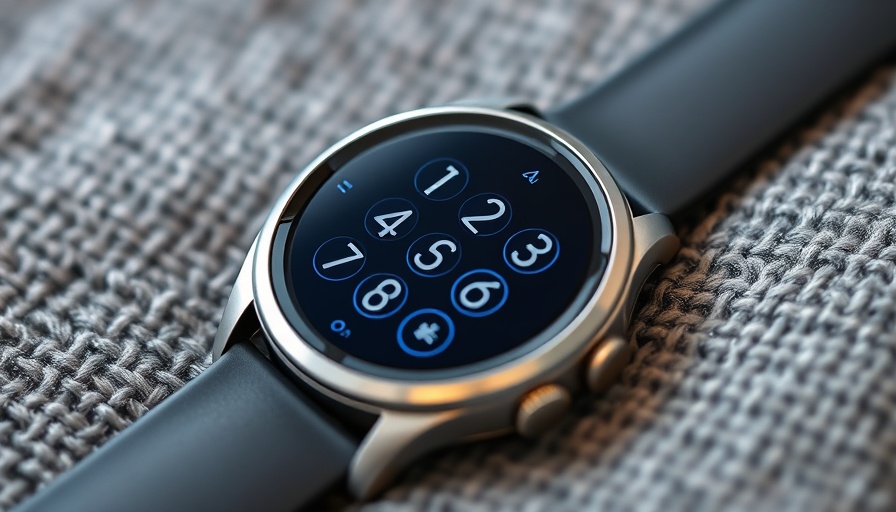
Why Locking Your Garmin Watch Enhances Security
In today's fast-paced digital world, where information on our devices can be easily accessed, ensuring the security of personal data is essential. For digital nomads who rely on their Garmin watches for productivity, locking your device with a passcode offers peace of mind as you go about your travels. Not only does it protect sensitive information stored in apps like Garmin Pay, but it also prevents unwanted access to your fitness and health data, which can be intrusive if accessed by unauthorized individuals.
Unlocking the Features: How to Set Your Passcode
Setting up a passcode on your Garmin device is straightforward. Here's how to get started:
- Access Settings: Start by navigating to the settings menu on your Garmin watch.
- Select System: Scroll down to find the System menu where the passcode settings reside.
- Set Your Passcode: Under the Passcode option, you can create a new four-digit code. If you've had a wallet setup previously, this is a seamless transition.
- Choose Lock Mode: After setting your passcode, choose between 'On' or 'Wallet only.' The 'On' option secures your entire watch, while 'Wallet only' restricts access solely to the payment feature.
This added layer of security not only ensures your data stays safe but also trains users to be aware of their digital security, which is crucial in a world where we are always on the go.
The Importance of Digital Security for Digital Nomads
For those who frequently travel or work remotely, digital security should be a top priority. Digital nomads are often seen using public Wi-Fi and cafes, making them prime targets for data theft. Implementing features like passcodes can encourage more vigilant behaviors regarding technology use. Additionally, this practice aligns well with the lifestyle of productivity and efficiency that savvy digital workers strive for.
Future Trends: What’s Next for Fitness Tech?
The mounting emphasis on data protection reflects a broader trend in fitness technology where manufacturers will likely introduce more advanced security features. Smartwatch capabilities are evolving quickly, pushing the envelope on functionality and secure access to health data. As technology improves, we can anticipate even more robust solutions that blend convenience with top-notch security.
Counterarguments: Are Passcodes Enough?
While a passcode can protect your device, it’s essential to consider whether this is enough to safeguard all your data. Passwords can be forgotten, or worse, can be guessed. Digital nomads should explore other security measures, such as keeping software updated and utilizing biometric locks when available. These strategies can contribute to a more comprehensive security framework.
Common Misconceptions About Fitness Watch Security
Some may believe that the physical presence of their watch is sufficient security, especially when not in use. This is a misconception; a watch left unattended can be accessed by anyone nearby. By establishing a passcode, users can significantly reduce the risk of unauthorized access. Therefore, embracing security measures is as crucial as the technological advancements in our wearables.
Final Thoughts: Secure Your Garmin, Secure Your Productivity
As you navigate a world where mobile devices have become indispensable, protecting your digital identity should come as second nature. Setting a passcode for your Garmin watch is not just about security; it's a definitive move towards a more productive and confident work style. By securing your data, you can focus on what matters most—health, fitness, and achieving your goals.
For those looking to optimize their use of technology for more efficient productivity, take a moment today to secure your Garmin watch. Your data—and your peace of mind—are worth it.
 Add Row
Add Row  Add
Add 




Write A Comment